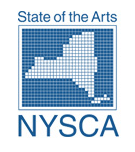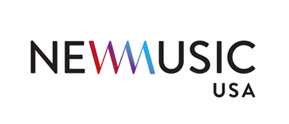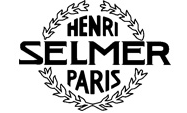The Art of the Transcription (NYC)

Hailed by The Los Angeles Times for “remarkable examples of virtuosity,” the PRISM Quartet presents stunning saxophone quartet adaptations of masterworks from the Western canon. The program features three anthologies: the New York premiere of A Schumann Bouquet, Pulitzer Prize-winner William Bolcom’s transcription of piano works from Album for the Young by Robert Schumann, presented as a gift to PRISM in 2015; the world premiere of Nine for Four, North Carolina composer Lawrence Dillon’s book of works by Guillaume de Machaut, Josquin des Prez, Johann Sebastian Bach, Ludwig van Beethoven, Robert Schumann, Frédéric Chopin, and Alexander Scriabin; and Pagine (Pages), Italian composer Salvatore Sciarrino’s setting of works by Carlo Gesualdo da Venosa, Johann Sebastian Bach, Wolfgang Amadeus Mozart, Domenico Scarlatti, Cole Porter, and George Gershwin.
The saxophone is a relatively young instrument, patented by Adolphe Sax in 1846. When the PRISM Quartet was founded in 1984, the body of available saxophone quartet repertoire was modest, and came primarily from mid-20th century French conservatory composers, including Pierre Lantier, Pierre Max Dubois, and Alfred Desenclos, names not widely known outside of classical saxophone circles. In recognizing this paucity of music, PRISM dedicated itself to spurring the creation of a new repertoire, prioritizing commissions from preeminent American composers who have never written for the medium, including winners of the Pulitzer Prize, Guggenheim Fellowship, and MacArthur “Genius” Award. PRISM has recorded and toured internationally with many of the more than 250 works it has commissioned over its 32-year history.
In addition to composing original works for saxophone, William Bolcom, Lawrence Dillon, and Salvatore Sciarrino share PRISM’s interest in exploring the saxophone quartet’s expressivity by connecting it to Western music’s rich heritage. These anthologies reflect the three composers’ own musical sensibilities, and the saxophone’s significance as an emblem of contemporary culture.
The concert takes place on Saturday, January 7, 2017 @ 7:30 PM at The DiMenna Center for Classical Music, Benzaquen Hall located at 450 W 37th Street in New York City. Tickets are $22 for general admission, $17 for students (with ID), $3 more at the door.
————————————————————————————————————–

William Bolcom on A Schumann Bouquet
Invented about the time the pieces in A Schumann Bouquet were composed, the saxophones were perhaps mostly intended for band use (in French the orchestre d’harmonie), would be frowned on by orchestras, and still are in some quarters. This schism may be why the saxophone literature is still so separate from the classical canon. Debussy wrote a pièce de concours for the Conservatoire not knowing much of anything about the instrument; Vaughan Williams and Walton used it also, but these are rare instances. It was not until the middle of the 20th century that more composers began to take the saxophone seriously.
PRISM is at the forefront of the current expansion of saxophone literature; I’ve had a wonderful experience writing for them as have so many others. I think my idea of arranging this set of short Robert Schumann piano pieces for them as a gift is an attempt to bridge the schism mentioned above, opening the gate to a wider potential expressivity for the saxophone by connecting it with the rich musical past.
I have loved Schumann’s music since boyhood, not only the major piano works like Carnaval, Humoreske, and Kreisleriana but also the many modest short pieces. Album for the Young, dating from 1848, is an often-overlooked rich source. Even the technically easy opening pieces are full of poetry, and the interpretative challenges in some later ones are as profound as in Schumann’s larger works (see for example Sehr langsam, the fifth “flower” in A Schumann Bouquet). These are not just teaching pieces without depth, and I suspect the major difference between the Album and most music intended for teaching is the presence of that depth.
————————————————————————————————————–

Salvatore Sciarrino on Pagine
The saxophone quartet is an incredibly homogeneous and sweet, flexible formation, born over one hundred years ago but rarely used nonetheless outside jazz, and therefore its potential still must be explored. Recently an Italian school of saxophone has flourished, based on the French school, and the technical quality of the instrumentalists has been greatly raised. Meanwhile, in the whole of Europe, an original chamber repertory has begun to form around the various groupings possible with such an instrument. I myself have written La bocca, i piedi, il suono (Mouth, feet, sound), a work for four alto saxophone soloists plus 100 saxophones of every size.
It has been just this difficulty of putting together this composition to make me aware of a certain lack of identity that the saxophone quartet suffers from, not being able to draw on, like almost every other instrument, its own repertory before romanticism. For this reason I have wanted to offer a real contribution to resolve the problem of the repertoire, central in my opinion, and I thought not so much about single compositions but about a cycle. Pagine (Pages) is an anthology based on different centuries and styles. In arranging the pieces, I have avoided the stereotypical aspects. To the contrary, I have aimed towards the inexorable modernity of the ancient masters, something that today is fashionable to blithefully ignore.
————————————————————————————————————–

Lawrence Dillon on Nine for Four
In 2009 I heard the PRISM Quartet play Pagine, a set of arrangements by Salvatore Sciarrino of works spanning several centuries. I was taken with the suppleness of the ensemble, its ability to adapt itself to widely divergent styles of music. I was also struck by the license Sciarrino took in collecting vastly different works into a single set.
The generations born in the mid-20th century were the first to experience music in their formative years via both live performance and on recordings. As a consequence, juxtapositions that would have confounded our forebears sound perfectly reasonable. Jumping from Carlo Gesualdo to Cole Porter is stimulating, where it once might have been horrifying.
I latched onto Sciarrino’s premise as a foundation for Nine for Four, a collection of pieces from the 14th to the 20th centuries that have had a strong impact on the way I think about music. The pungent harmonies of Machaut and Scriabin, the nimble wit of Josquin and Beethoven: listening to these compositions through the prism of a saxophone quartet emphasizes how vastly different they are from one another, and how similar. Some of the works that comprise Nine for Four are just simple arrangements, others are reinterpretations. All of them are pieces I discovered in my youth that continue to haunt me.
————————————————————————————————————–
CONCERT PROGRAM
Schumann Bouquet by Robert Schumann (1810-1856), arr. 2015 by William Bolcom (b. 1938)
I. Lieber Mai (The beautiful month of May)
II. Knecht Ruprecht (The bogeyman)
III. Sheherazade
IV. Ländler (a sort of German waltz)
V. Sehr langsam (Very slow)
VI. Lied italienischer Marinari (Song of the Italian boatmen)
Pagine (Pages, 1998) by Salvatore Sciarrino (b. 1947) (select movements)
Madrigal: Itene miei sospir by Carlo Gesualdo da Venosa (1564 – 1619)
Madrigal: Tu m’uccidi, o crudele by Carlo Gesualdo da Venosa
Fughetta (super Diess sind die heil’gen zehn Gebot) by Johann Sebastian Bach (1685 – 1750)
Kyrie (Gott Vater in Ewigkeit) by Johann Sebastian Bach
Sonata L. 223 / K. 532 ( Allegro) by Domenico Scarlatti (1685 – 1757)
Sonata L. 257 / K. 206 (Andante) by Domenico Scarlatti
Adagio (after Gran Partita K. 361) by Wolfgang Amadeus Mozart (1756 – 1791)
I’ve got you under my skin by Cole Porter (1862 – 1964)
Caça “O virgo splendens” by Anonymous (14th Century)
Chace “Tres dous compains” by Anonymous (14th Century)
Who Cares? by George Gershwin (1898 – 1937)
Sonata L. 215 by Domenico Scarlatti
Nine for Four by Lawrence Dillon (b. 1959) (select movements)
Motet by Guillaume de Machaut (1300 – 1377)
El grillo by Josquin des Prez (c. 1450/1455 – 1521)
Absalon, fili mi by Josquin des Prez
Sarabande from French Suite in D Minor by Johann Sebastian Bach (1685 – 1750)
Scherzo from Sonata in D Major by Ludwig van Beethoven (1770 – 1827)
Am leuchtenden sommermorgen from Dichterliebe by Robert Schumann (1810 – 1856)
Mazurka by Frédéric Chopin (1810 – 1849)
Two preludes by Alexander Scriabin (1872 – 1915)
Concert program subject to change
————————————————————————————————————–
ACKNOWLEDGEMENTS
This program is presented with generous support from the New York State Council on the Arts with the support of Governor Andrew Cuomo and the New York State Legislature; the Alice M. Ditson Fund of Columbia University; Conn-Selmer; and New Music USA’s Impact Fund. PRISM Quartet, Inc. also receives generous support from the Amphion Foundation, New Music USA’s Cary New Music Performance Fund, the Aaron Copland Fund for Music, Inc., and individual donors.




The DiMenna Center for Classical Music, Benzaquen Hall
450 W 37th St, New York, NY 10018
January 07, 2017
7:30 PM
$22 general admission, $17 student with valid ID ($3 more at the door). ON DAY OF CONCERT, TICKETS ARE AVAILABLE ONLY AT THE DOOR.

